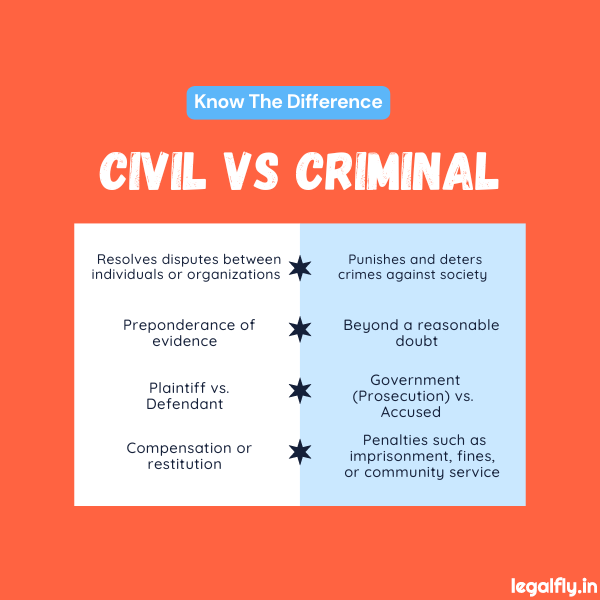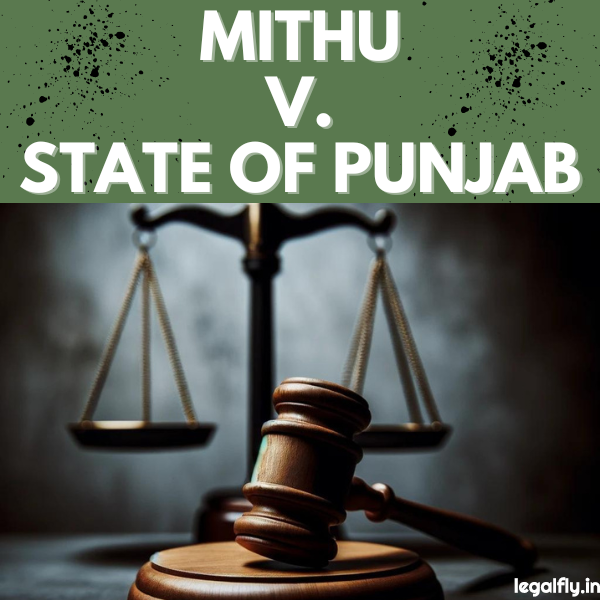Table of Contents
Introduction to Civil Law and Criminal Law
Civil law and criminal law are the two main types of law in India’s legal system.
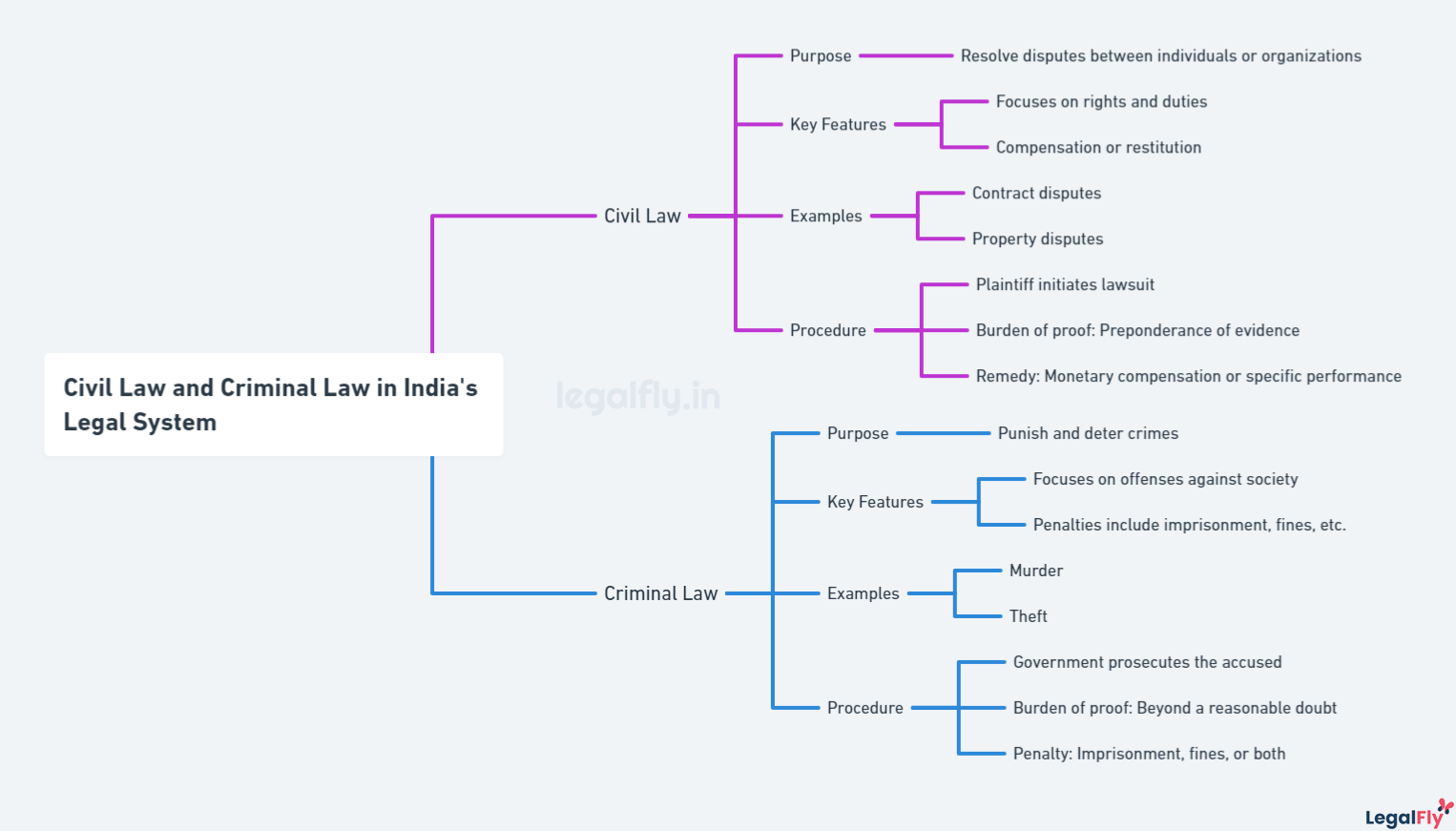
Civil law deals with disputes between private individuals, organizations, or between private parties and the government. It aims to provide remedies and compensation to resolve disputes through a civil trial or settlement.
On the other hand, criminal law deals with offences against the public or state. It aims to uphold public order and safety by defining criminal acts and prosecuting those who commit crimes. The punishment for criminal offences can include fines, imprisonment, or probation.
The key difference lies in how cases originate and who initiates legal action. Civil cases are initiated by a plaintiff seeking compensation or remedies for a wrong, while criminal cases are initiated and prosecuted by the government for violation of criminal statutes.
Origins and Purpose
Civil law originated during the Roman Empire and was primarily based on the Justinian Code compiled under Emperor Justinian during the 6th century CE. It was developed to regulate relationships and disputes between private citizens.
In contrast, criminal law emerged from common law traditions in England during the 12th and 13th centuries as a means for the state to prosecute and punish criminal conduct. Its origins trace back to the Norman conquest of Britain in 1066 CE and efforts by the monarchy to exert greater control.
Civil law provides remedies and compensation for individuals or organizations harmed by the actions or negligence of others. It also aims to resolve private disputes and enforce contractual obligations. Criminal law protects the public and prohibits behaviour viewed as dangerous or threatening to society. Violations are considered crimes against the state.
Who Initiates the Case?
Civil cases are initiated by individuals, organizations, or government agencies who believe they have been wronged. These parties are known as plaintiffs in civil litigation. The initiation of civil cases is done by individuals, business entities, or agencies.
In contrast, criminal cases are initiated by government prosecutors, typically at the city, state, or federal level. Prosecutors file criminal charges on behalf of the government and the people. In criminal cases, the government initiates the lawsuit.
So, while plaintiffs drive civil lawsuits seeking compensation or redress, public prosecutors pursue criminal cases in the name of the state and society.
Types of Legal Proceedings
Civil and criminal law cases follow different legal procedures and rules.
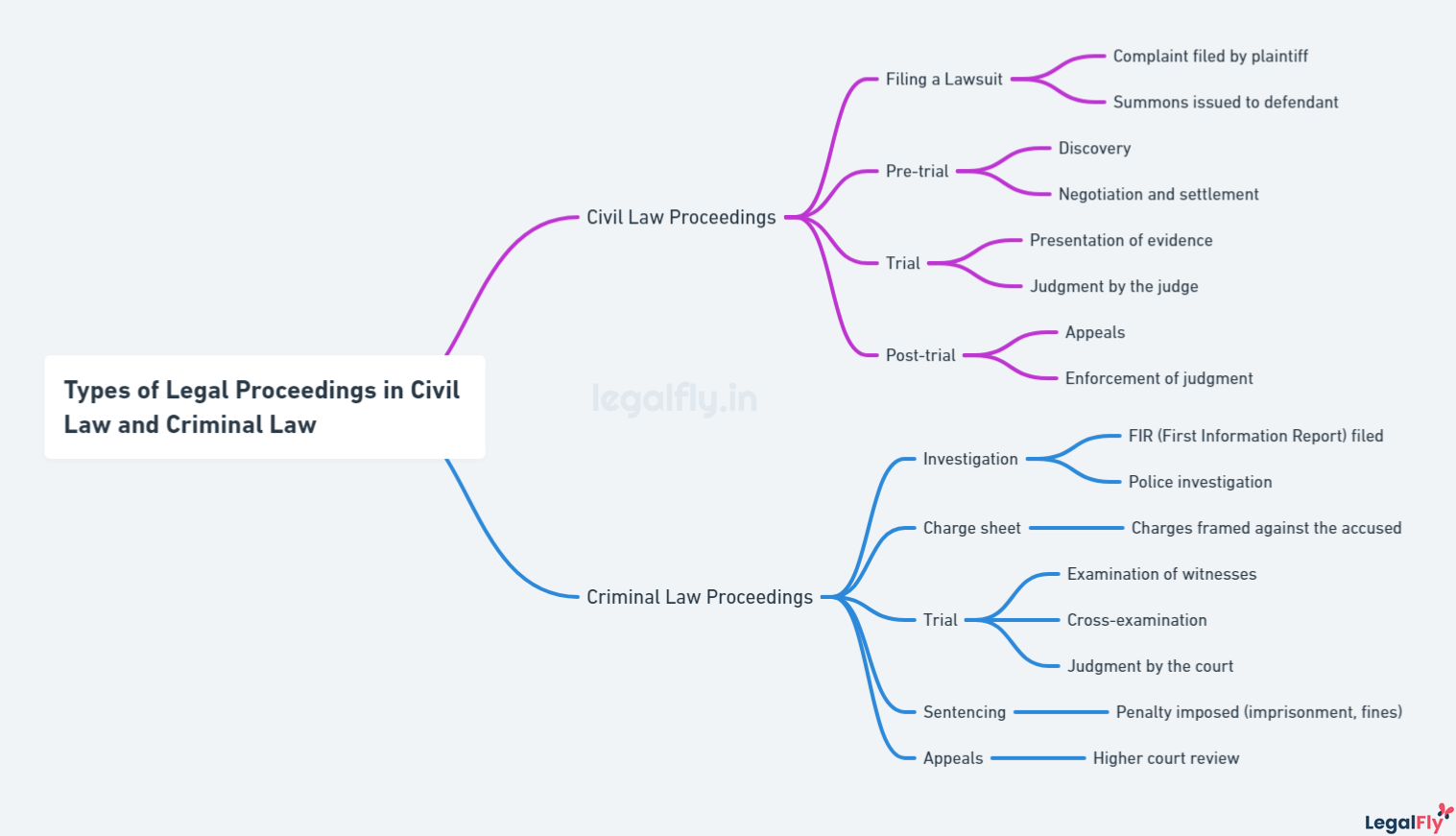
Procedures in Civil Trials
Civil trials involve a legal dispute between private parties, such as individuals, organizations or corporations. The plaintiff initiates a civil lawsuit to seek compensation or other remedies for some type of harm caused by the defendant. Civil trials do not determine guilt or innocence – they aim to resolve the dispute and determine liability for damages.
Key procedures in a civil trial include pre-trial discovery, filing of motions, settlement conferences, selecting a jury if requested, opening and closing arguments, examination and cross-examination of witnesses, and the judge’s instructions to the jury before deliberations. The legal standard in civil cases is “preponderance of evidence, ” meaning the plaintiff must prove their case is more likely than not true.
Steps in a Criminal Trial
Criminal trials involve the prosecution of an individual, corporation or other entity accused of violating criminal laws. The aim is to determine guilt or innocence. The state initiates the action through a prosecutor or district attorney acting on behalf of the government.
Key steps in a criminal trial include jury selection, opening statements, presentation of evidence, closing arguments, jury instructions, jury deliberations and the verdict. The legal standard is “beyond a reasonable doubt” and has a much higher bar than civil cases. The defendant is presumed innocent until proven guilty.
Burden of Proof and Standards
The burden of proof refers to a party’s obligation in a trial to prove a factual dispute to a required standard. There are key differences in the burden of proof between civil and criminal law cases.
Proof Requirements in Civil Cases
In civil law, the burden of proof is known as the “preponderance of evidence” standard. This means that the plaintiff – the party who initiates the lawsuit – must provide sufficient evidence to make their claim more likely to be true than not true. The verdict in a civil case is determined by a majority vote rather than requiring unanimity. The plaintiff only needs to convince the judge or jury that the defendant was “more likely than not” at fault. This standard is lower than in criminal cases as civil suits have lower stakes and do not involve depriving the defendant of liberty.
Standard of Proof in Criminal Law
Criminal cases have a much higher burden of proof placed on the prosecution. They must prove the defendant’s guilt “beyond a reasonable doubt”. This means that no other logical explanation can be derived from the facts presented and that the defendant is almost certainly guilty. Criminal charges involve serious consequences like imprisonment or even execution in some countries, so the standard of proof is set very high to avoid punishing innocent people.
Potential Outcomes and Penalties
Civil and criminal law have very different potential outcomes and penalties. In civil law, the aim is to provide remedies and resolutions to disputes between private parties. The penalties are not intended to punish but rather to make the plaintiff whole again.
Common civil law remedies include:
- Monetary damages – Compensates the plaintiff for losses. These can include actual losses, lost wages, medical bills, and pain and suffering.
- Injunctive relief – Requires the defendant to take or refrain from taking specific actions. This aims to prevent future harm.
- Declaratory relief – A judge declares the rights of the parties without ordering anything be done or paid.
- Restitution – Restores something unlawfully taken from the plaintiff.
In contrast, criminal law aims to penalize and punish offenders on behalf of the state and society. The penalties are intended to be retributive and deter future crimes. Common criminal law punishments include:
- Fines – Monetary penalties paid to the government.
- Probation – Allows offenders to remain free under supervision.
- Jail or prison time – Incarceration for set periods.
- Capital punishment – Death penalty in some jurisdictions.
- Rehabilitation programs – For example, substance abuse counselling.
The critical distinction is that civil remedies aim to make the victim whole again, while criminal punishments are society’s way of punishing and deterring criminal behaviour.
Examples of Civil and Criminal Law Cases
Some of the most notable civil law cases in India include:
- M.C. Mehta vs. Union Of India – This case, filed by environmentalist M.C. Mehta against the Union of India and others in 1986, was instrumental in evolving environmental jurisprudence in India. The Supreme Court declared that polluting industries must pay compensation for the harm they cause.
- Vishaka & Ors vs State of Rajasthan – This 1997 case led to the formulation of the Vishaka Guidelines, which impose obligations on employers to prevent and redress sexual harassment in the workplace. It was a landmark case in gender justice.
Key criminal law cases in India include:
- State of Haryana vs Raja Ram – In this 1973 case, the court convicted Raja Ram of culpable homicide in the killing of a young boy at his ashram, overturning his acquittal by a lower court. It established culpability for criminal negligence.
- Priyadarshini Mattoo Murder Case – This much publicized 1996 Delhi murder case, in which law student Priyadarshini Mattoo was stalked and killed by a senior, resulted in stricter anti-stalking laws after public outcry over the acquittal.
Key Differences
Civil and criminal law have important distinctions that dictate how cases proceed and their potential consequences. Some key differences include:
- Initiating party: Civil cases are initiated by private parties such as individuals or organizations, while criminal cases are pursued by the state through prosecutors or attorneys general.
- Conduct in question: Civil law deals with disputes between private parties over non-criminal matters, while criminal law involves wrongdoing that is considered harmful to society as a whole.
- Standards of proof: The burden of proof is lower in civil cases, based on a “preponderance of evidence.” Criminal cases require a higher standard of “beyond a reasonable doubt”.
- Potential penalties: Remedies in civil law may involve monetary damages or court orders. Criminal convictions can result in fines, probation, imprisonment, or even execution in some jurisdictions.
- Procedures: Civil trials involve bench trials before a judge or jury trials if requested. Criminal prosecutions follow standardized procedures with constitutional protections for the accused.
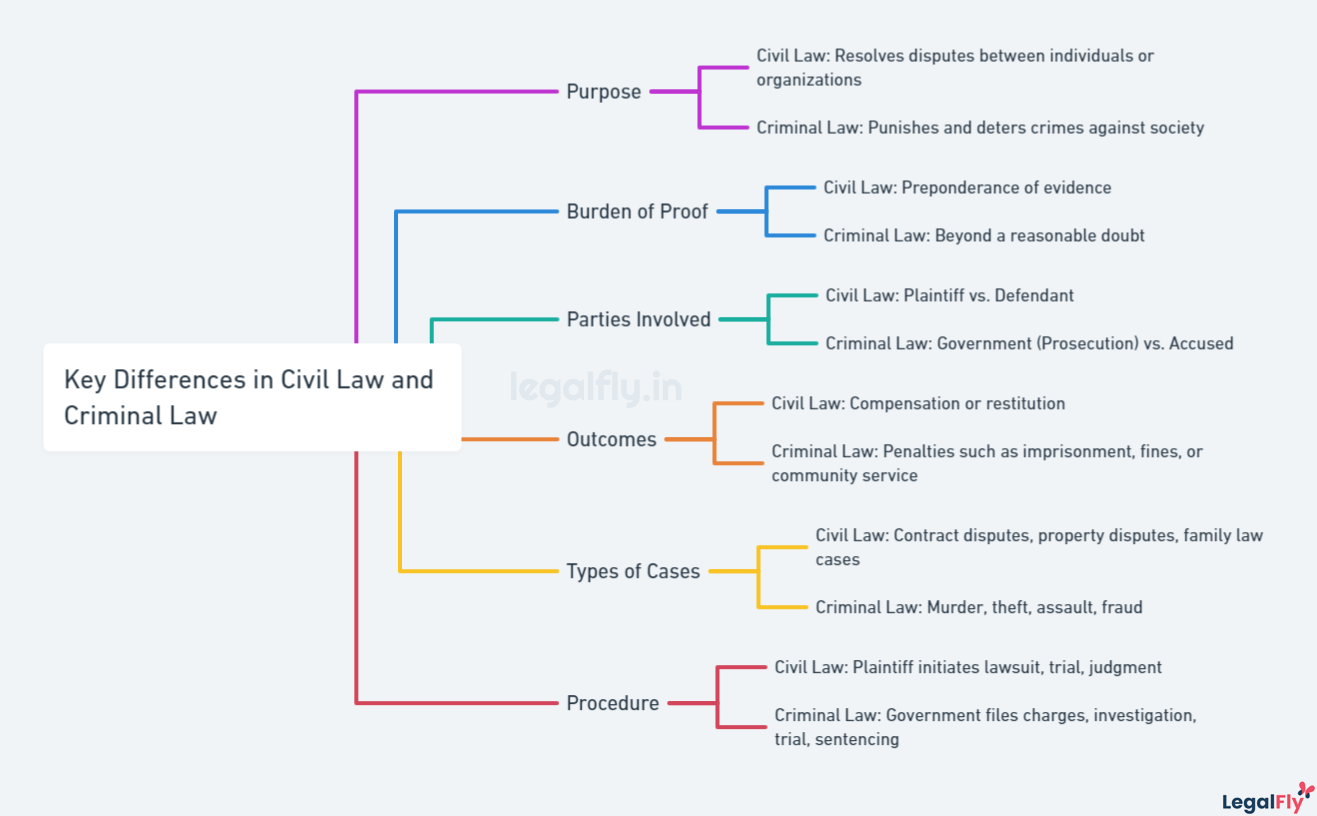
In summary, the type of harm, higher standards, and severe penalties distinguish criminal law from civil law. These key differences shape how legal cases proceed and the potential consequences for the parties involved.
Implications for Individuals and Society
The differences between civil law and criminal law have profound implications for individuals and society. Civil law focuses on resolving disputes between private parties and providing remedies like monetary compensation. Criminal law is concerned with upholding public order through punishment and rehabilitation of offenders.
For individuals, civil litigation versus criminal prosecution leads to very different experiences. In civil cases, parties retain autonomy and control, while criminal defendants lose many personal freedoms if convicted and sentenced. The higher standard of proof in criminal law means many crimes go unpunished, whereas the lower burden in civil law enables more people to obtain remedies.
Societally, criminal law is crucial in setting behavioural standards, deterring crime, and expressing moral condemnation of harmful acts. Civil law provides mechanisms for peaceful dispute resolution and upholds contracts and obligations. The coexistence of robust civil and criminal justice systems contributes to social stability and accountability. However, overcriminalization can diminish civil liberties, while excessive civil litigation breeds a culture of mistrust and litigiousness.
Overall, the nuanced balance between civil and criminal law has profound effects. Their differences shape people’s lives and interactions in a complex legal environment. Understanding these distinctions helps citizens navigate the law.
Conclusion
In conclusion, there are some key differences between civil law and criminal law that are important to understand.
Civil law deals with disputes between individuals or organizations, where one party sues the other for compensation or to enforce a right. Criminal law deals with wrongs against society, where the state prosecutes an individual or entity for breaking the law.
The main takeaways are:
- Civil law aims to right a wrong and provide remedies, while criminal law aims to punish crimes and protect society.
- The burden of proof is lower in civil cases (balance of probabilities) than in criminal cases (beyond reasonable doubt).
- Civil trials have procedures focused on evidence and arguments, while criminal trials have strict procedural rules to protect the rights of the accused.
- Civil remedies include damages, injunctions, and other remedies, while criminal penalties can include fines, probation, jail time, or even death.
- Private parties initiate civil cases, while criminal cases are brought by the state through public prosecutors.
Understanding these key differences helps illustrate that civil and criminal law have distinct roles, purposes, processes, burdens of proof, and outcomes in the legal system. This basic knowledge empowers individuals to better understand the law and their rights and responsibilities under it.

